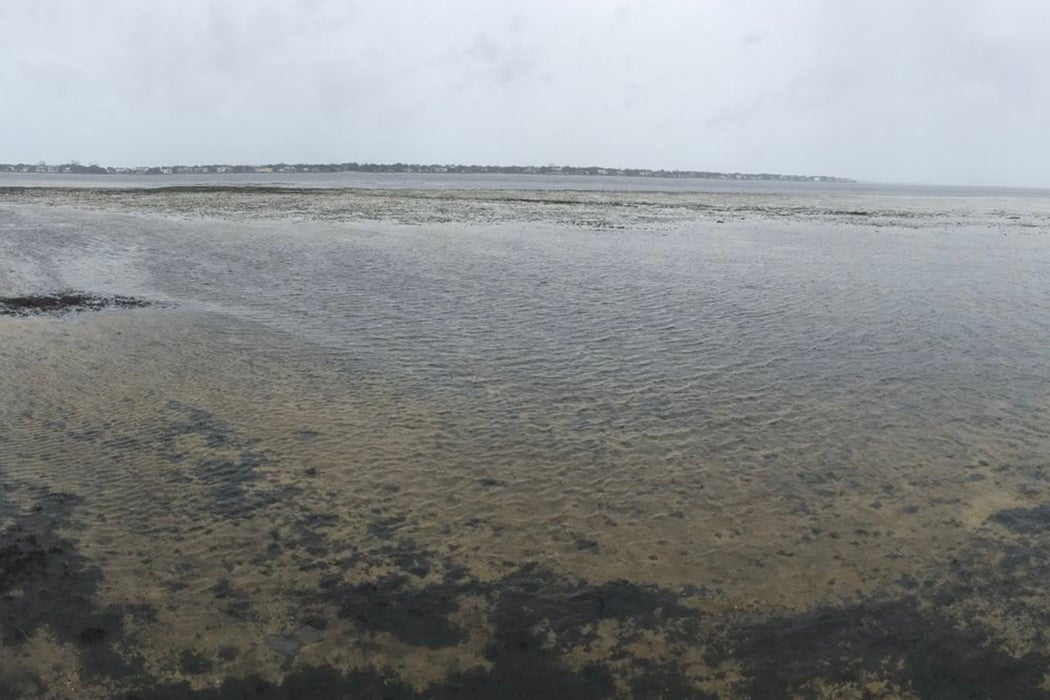Hurricane Irma caused devastating damage throughout the Caribbean, and an expensive cleanup on the U.S. mainland. But amid the wreckage, there were wonders. Residents of parts of the Bahamas and Florida’s West Coast watched in marvel as the ocean receded far from the shore. What happened to the sea?
When caused by storms, receding oceans are result of an inverted storm surge, a “negative surge.” Storm surges have a few causes. Severe storms can cause dramatic pressure changes. Reduced pressure pushing down on the ocean causes the ocean to expand upwards, resulting in rising water. When pressure increases, sea surface levels can drop, resulting in a negative surge. Local topography and the position of the storm make] a big difference as to how the ocean responds, so different areas can have radically different responses to the same storm system. If the pressure drops away from the coast, water will bulge in that direction.
Wind also contributes to surges, and the stronger the wind, the stronger the effect. Strong, consistent winds push water in the direction in which they move. If the winds are blowing toward the shore, water will pile up against the shore, flowing inland through any low-lying channel such as streets or drainages, causing flooding. If the wind is blowing away from shore, the ocean is physically pushed away from the coast in a negative surge.
Surges are further impacted by tide and sea level. Winds blowing away from shore on a falling tide will cause the largest negative surges. Sea level rise also contributes; higher sea level means positive surges will rise higher and potentially cause more damage, while negative surges will not recede as far as they might have. For example, in Venice, Italy, where the city has sunk, positive surges have been consistently exacerbated as the city drops. When the wind shifts or the tide rises, or both, the negative surge will reverse. Hurricanes move in a spiral pattern, with winds blowing first one way then the other, so it is not uncommon for a negative surge to be followed by a positive surge, and vice-versa.
There is one other cause of a receding sea. In 2004, curious beachgoers moved out to examine the bed of the receding sea. Shortly before, an offshore earthquake had displaced a huge volume of water which moved across the open ocean as a wave at tremendous speeds. As the wave entered shallow water, it was forced upwards. However, mass must be conserved, so the water that feeds the upwards growth of the wave comes from the area next to shore. The resulting tsunami killed hundreds of thousands of people. The trough of the huge wave reaches shore first, before the dangerous crest is even visible (Note: The sea does not always recede in a tsunami). Generally, the sea receding is a danger sign. One way or another, the water is coming back.







